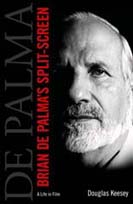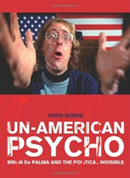EIGHT ESSAYS POSTED TODAY @ FEUX CROISES, TIMED W/'PASSION' RELEASE
 Feux Croises had been planning a Brian De Palma Dossier to post last month, as Passion opened in France, but the site had to postpone the series of essays for unknown reasons. The Dossier opened up today on the site, featuring eight essays exploring various facets of De Palma's cinema.
Feux Croises had been planning a Brian De Palma Dossier to post last month, as Passion opened in France, but the site had to postpone the series of essays for unknown reasons. The Dossier opened up today on the site, featuring eight essays exploring various facets of De Palma's cinema.In De Palma ou l'art du visible, Jérôme Dittmar sees De Palma's cinema constructions (themselves full of cubist complications and deconstructions of their own systems and the viewer's gaze) as ultimately a search for the right image. "If Nicolas Cage should go back to the opening shot of Snake Eyes to solve the puzzle and understand what was behind this whole scene, the result ultimately matters more than the process," writes Dittmar. He later adds, "With its large YouTube collage, Redacted said the same thing: all the pictures are there, you just need to put them in order with a movie clapper in the face of modern cinema, to impose the logic of classicism."
In Brian Does Hollywood, Chloé Beaumont notes that De Palma's Body Double is "much more than a reading of Vertigo, but is "primarily a work of the actor." Where the hero of Vertigo has the job of the voyeur, the spy/detective, the hero of Body Double's job as an actor gets turned on its head as he is fired and becomes voyeur. The weapon of the voyeur, the "viewer", becomes the remote control, allowing him to dissect the images. Meanwhile, the villain of the film has no trouble playing his part, being the director as well as the actor. Beaumont also explores the two ends of the tunnel in which Jake has a bout of claustrophobia, with the white, glowing "movie screen" behind the Indian at one end, and the unattainable femme fatale at the other. "It is by meeting and saving the pornographic actress Holly, the inverse of Gloria, that the illusions of his own milieu vanish."
In Brian De Palma et le bonheur, Rémy Russotto suggests that despite all the wrangling with paranoid or fragmentary perspectives of his protagonists, De Palma's cinema produces solid images that fill in the holes: "a complete answer to the questions posed by the films." (This reminds of the working title for Armond White's never completed De Palma study, "Total Illumination.") Russotto looks at the endings of De Palma's recent films, noting of Femme Fatale that, "Against all odds, the film ends well. We go from black to white." And following the flash of the corpse on the front lawn at the end of The Black Dahlia, Scarlett Johansson is the mother figure that asks the hero to "come inside." Writes Russotto, "She closes the door. The end. All corpses are left outside, disappeared."
I'll post summaries of the other essays tomorrow or the next day.
Updated: Friday, March 8, 2013 4:57 PM CST
Post Comment | Permalink | Share This Post



